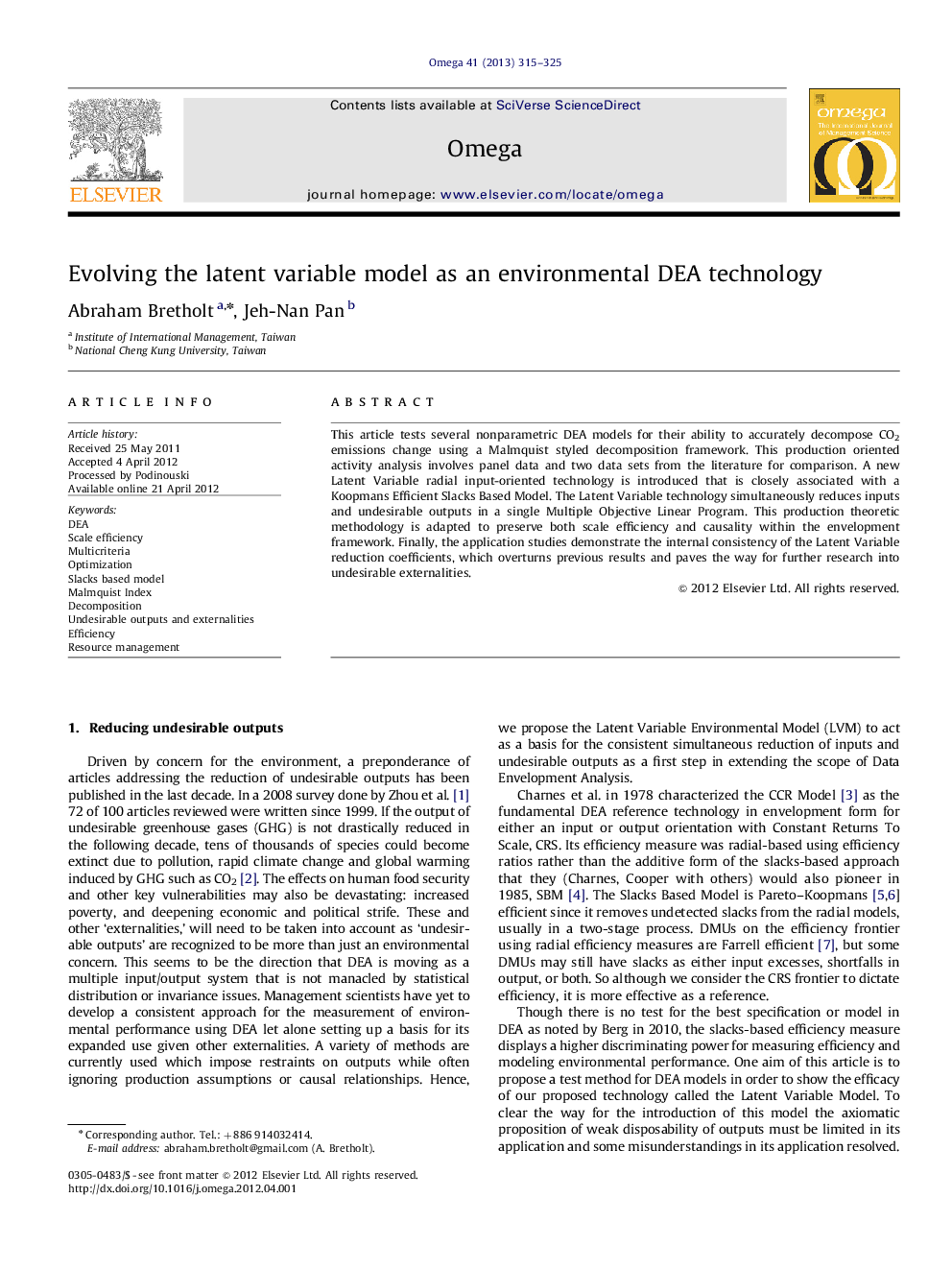| Article ID | Journal | Published Year | Pages | File Type |
|---|---|---|---|---|
| 1032663 | Omega | 2013 | 11 Pages |
This article tests several nonparametric DEA models for their ability to accurately decompose CO2 emissions change using a Malmquist styled decomposition framework. This production oriented activity analysis involves panel data and two data sets from the literature for comparison. A new Latent Variable radial input-oriented technology is introduced that is closely associated with a Koopmans Efficient Slacks Based Model. The Latent Variable technology simultaneously reduces inputs and undesirable outputs in a single Multiple Objective Linear Program. This production theoretic methodology is adapted to preserve both scale efficiency and causality within the envelopment framework. Finally, the application studies demonstrate the internal consistency of the Latent Variable reduction coefficients, which overturns previous results and paves the way for further research into undesirable externalities.
► DEA Latent Variable technology simultaneously reduces specified inputs and undesirable outputs in a single multi-objective model. ► This technology has highly correlated reduction coefficients that minimize distortion and slacks. ► It complies with production theory to derive unique scale efficiencies for each reduction coefficient. ► It re-engineers a Malmquist-styled decomposition model from the literature to make its DEA frontier DMUs feasible. ► It uses weak disposability of inputs rather than ‘treating outputs as inputs’.
